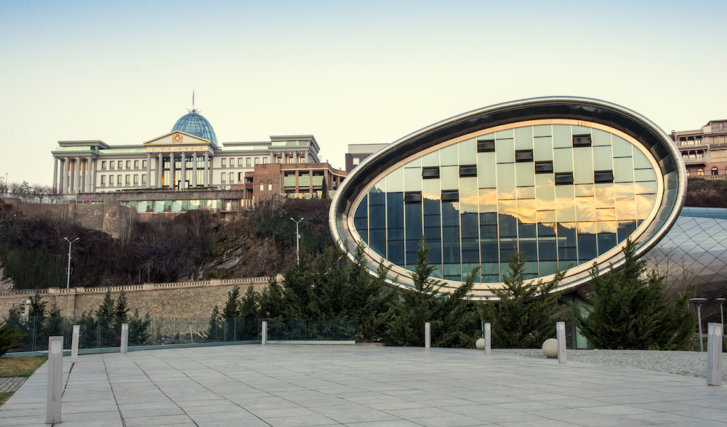“My big question for Architecture is, Why do humans have to adapt to buildings? And why can’t Architecture adapt to humans?”
Doris Kim Sung
[youtube=http://www.youtube.com/watch?feature=player_embedded&v=-Ms5qoMO3gQ]
It is in the very nature of a trend to move on past its point of highest enthusiasm and fizzle out in favor of something else. Architecture, like everything else, goes through these periods of interest and inclination. For a long time, Sustainable Architecture–environmentally conscious design–was considered the latest trend. Now that trend is evolving.
Resilient Architecture takes the ideas behind sustainable design a step further. Metal That Breathes is one of the latest evolutionary byproducts of the new trend, and is best evidenced by the work of Architect Doris Kim Sung of the University of Southern California.
Inspired by her original interest and education in Biology, Sung used so-called “smart metal” to design and build her Bloom installation in Los Angeles. As Sung pointed out in her recent TED talk, “[Skin is] the first line of defense for the [human] body… Our building skins should be more similar to human skin.”
One author on the Core77 design blog explained Sung’s work this way:
Sung has been experimenting with thermo-bimetals, two thin layers of metal that expand and contract, in response to temperature, at different rates. Laminating two like-sized sheets of different material together and subjecting them to a temperature change causes the sheet to curl up—and this phenomenon can be exploited to create a building that ingeniously shades itself as needed, requiring no external power.
Sounds crazy, no? And it’s possible that the American market is not yet ready to explore the possibilities of this breathing metal in its regular buildings. But as Sung mentioned in her recent TED talk, at least one Chinese developer is already including the thermo-bimetal screens in its design for a house. The screens “can actually open and close as the sun moves around on that surface,” said Sung. “[This implies] that we don’t need shutters, or drapes, or blinds anymore… we can control the amount of air conditioning you need inside that building.”
Watch Sung’s Metal That Breathes TED Talk (and hear about how the breathing capabilities of grasshoppers factor into her research!) here:
[youtube=http://www.youtube.com/watch?feature=player_embedded&v=wvIyVZf3qZU#!]
And in case you’re wondering about the deeper implications of this kind of beyond-the-basic-sustainability philosophy, I’ll leave you with this quote from a recent Treehugger.com blog post entitled Building Green Is No Longer Enough, It is Time To Build Resilient:
It turns out that many of the strategies needed to achieve resilience–such as really well-insulated homes that will keep their occupants safe if the power goes out or interruptions in heating fuel occur–are exactly the same strategies we have been promoting for years in the green building movement. The solutions are largely the same, but the motivation is one of life-safety, rather than simply doing the right thing. We need to practice green building, because it will keep us safe–a powerful motivation–and this may be the way to finally achieve widespread adoption of such measures. — Alex Wilson, founder of BuildingGreen



